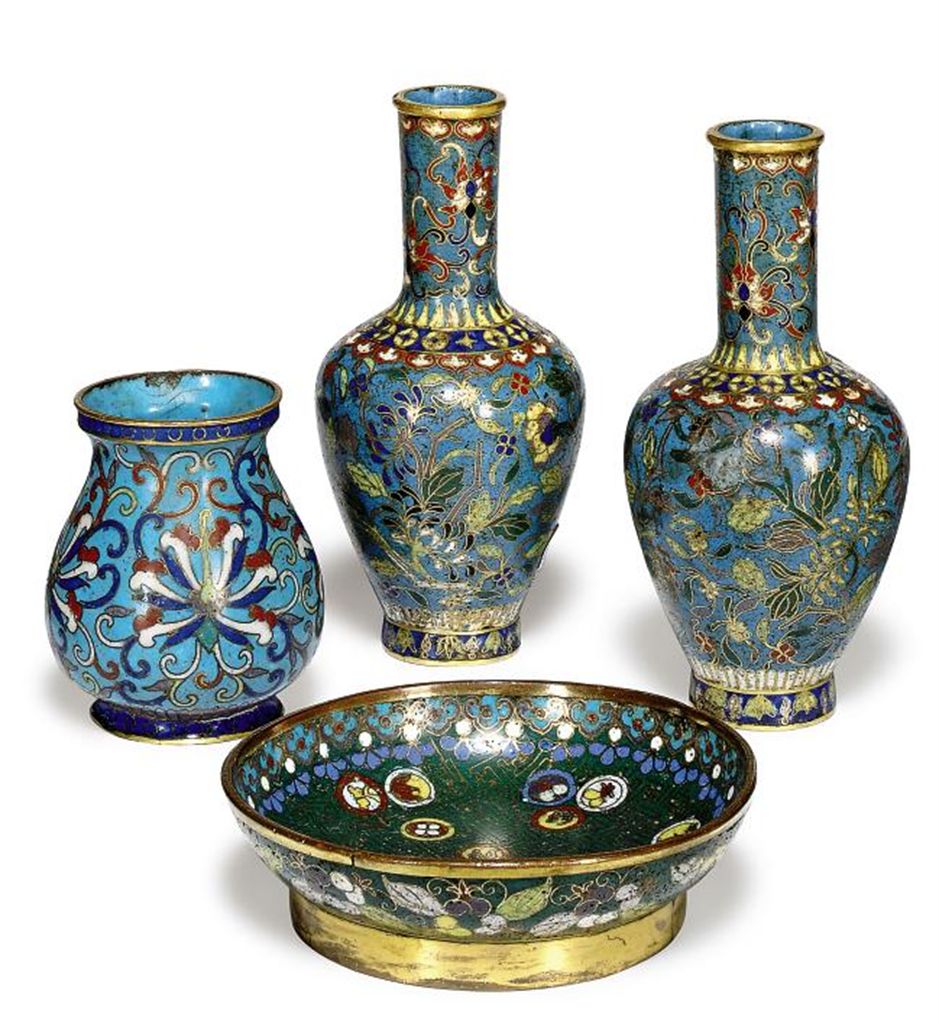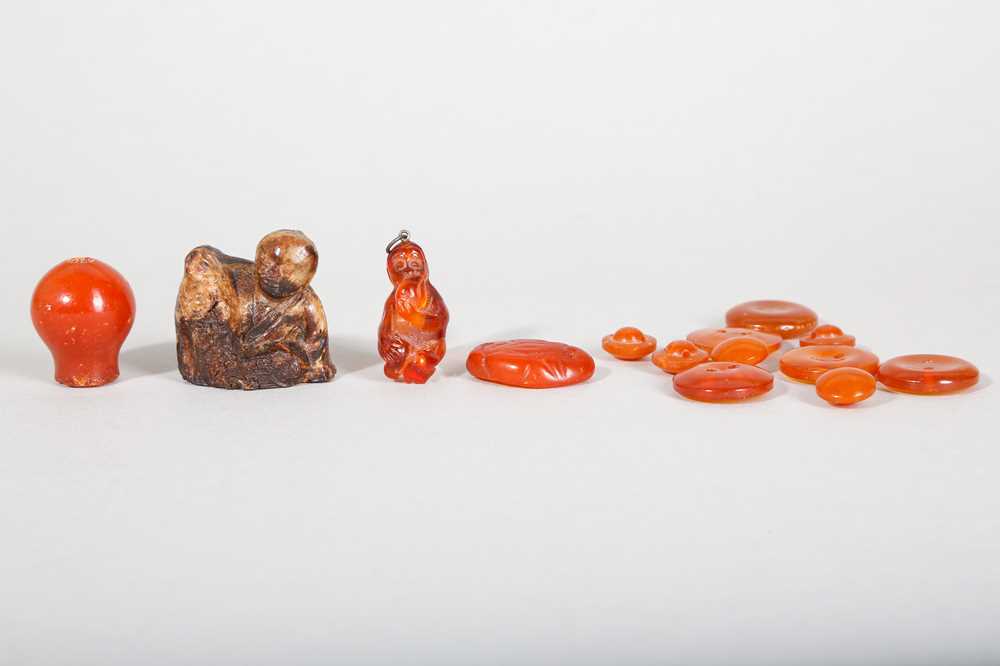A group of small optical instruments, various makers, mainly early to mid 20th century. To include a lacquered brass spinthariscope with threaded lens section enclosing specimen holder adjusted via a knurled screw protruding through the base rim and inscribed SPINTHARISCOPE, W. CROOKES, 1903, 4cm (1.5ins) long, cased; a French chronoscope with lens cap enclosing a bulls-eye plano-convex lens opposing sprung magazine of paper tints, the exterior with slot to take a drilled disc to the side and inscribed PAP, CHRONOSCOPE, BREVETE EN TOUS PAYS to end cap, 4.5cm (1.75ins) long, cased; a lacquered and japanned brass portable microscope with eyepiece over sprung slide aperture and fixed oculus to the tube slotting into a cylindrical base incorporating pivoted mirror, in small beize-lined case with tweezers, specimen pin and three slides, the box 9.5cm (3.75ins) wide; a German scale magnifier with eyepiece tube friction slide fitted within stand terminating with an aperture incorporating a scale edge annotated in tenths 0 to 0.5 inches dived into two hundredths of an inch, the side with trademark HENSOLT, WETZLAR, 5cm (2ins) approx. high; and two other items, (6). The spinthariscope is a device for observing individual nuclear disintegrations caused by the interaction of ionizing radiation with a phosphor. The design of the instrument was devised by Sir William Crookes in 1903 and, as with many inventions, the concept came about accidentally. Whilst observing the fluorescence that alpha rays from radium produced on a zinc sulfide screen some radium was accidentally spilt, eager to locate and recover it, Crookes inspected the screen under a microscope. Rather than the expected uniform glow, he observed discrete flashes of light with each flash being produced by an individual alpha particle. Crookes named the instrument the Spinthariscope from the ancient Greek word for scintillation, a name that befits the magical nature of the phenomenon which it is designed to demonstrate. The chronoscope is a form of photographic Actinometer which is designed to produce a small negative of a subject onto a piece of sensitive paper held within the magazine within the instrument. The initials PAP inscribed on the example in the current lot stand for Photometre Automatique Parfait and the design was conceived by Paul Boucher in around 1900.
A group of small optical instruments, various makers, mainly early to mid 20th century. To include a lacquered brass spinthariscope with threaded lens section enclosing specimen holder adjusted via a knurled screw protruding through the base rim and inscribed SPINTHARISCOPE, W. CROOKES, 1903, 4cm (1.5ins) long, cased; a French chronoscope with lens cap enclosing a bulls-eye plano-convex lens opposing sprung magazine of paper tints, the exterior with slot to take a drilled disc to the side and inscribed PAP, CHRONOSCOPE, BREVETE EN TOUS PAYS to end cap, 4.5cm (1.75ins) long, cased; a lacquered and japanned brass portable microscope with eyepiece over sprung slide aperture and fixed oculus to the tube slotting into a cylindrical base incorporating pivoted mirror, in small beize-lined case with tweezers, specimen pin and three slides, the box 9.5cm (3.75ins) wide; a German scale magnifier with eyepiece tube friction slide fitted within stand terminating with an aperture incorporating a scale edge annotated in tenths 0 to 0.5 inches dived into two hundredths of an inch, the side with trademark HENSOLT, WETZLAR, 5cm (2ins) approx. high; and two other items, (6). The spinthariscope is a device for observing individual nuclear disintegrations caused by the interaction of ionizing radiation with a phosphor. The design of the instrument was devised by Sir William Crookes in 1903 and, as with many inventions, the concept came about accidentally. Whilst observing the fluorescence that alpha rays from radium produced on a zinc sulfide screen some radium was accidentally spilt, eager to locate and recover it, Crookes inspected the screen under a microscope. Rather than the expected uniform glow, he observed discrete flashes of light with each flash being produced by an individual alpha particle. Crookes named the instrument the Spinthariscope from the ancient Greek word for scintillation, a name that befits the magical nature of the phenomenon which it is designed to demonstrate. The chronoscope is a form of photographic Actinometer which is designed to produce a small negative of a subject onto a piece of sensitive paper held within the magazine within the instrument. The initials PAP inscribed on the example in the current lot stand for Photometre Automatique Parfait and the design was conceived by Paul Boucher in around 1900.








.jpg?w=400?width=1600&quality=70)

.jpg)



Testen Sie LotSearch und seine Premium-Features 7 Tage - ohne Kosten!
Lassen Sie sich automatisch über neue Objekte in kommenden Auktionen benachrichtigen.
Suchauftrag anlegen